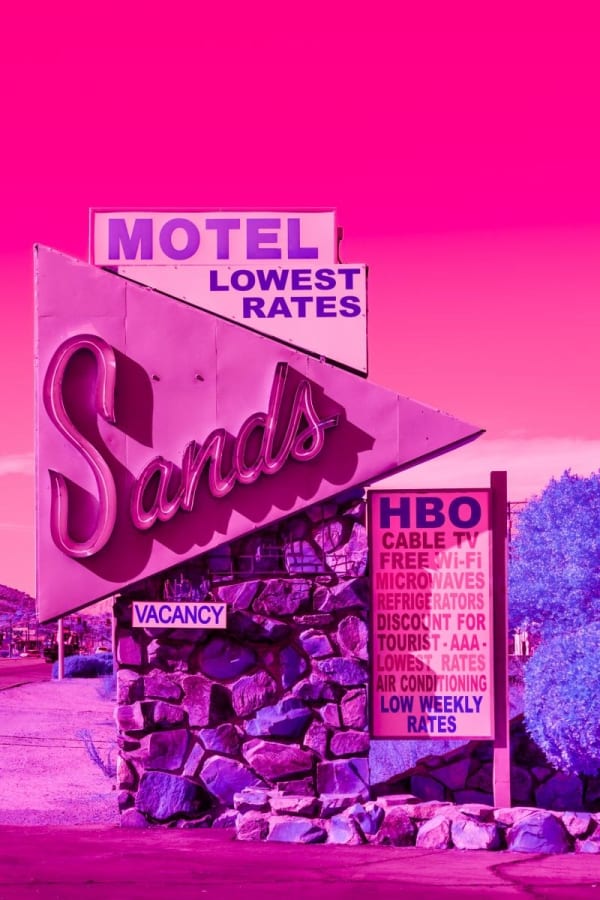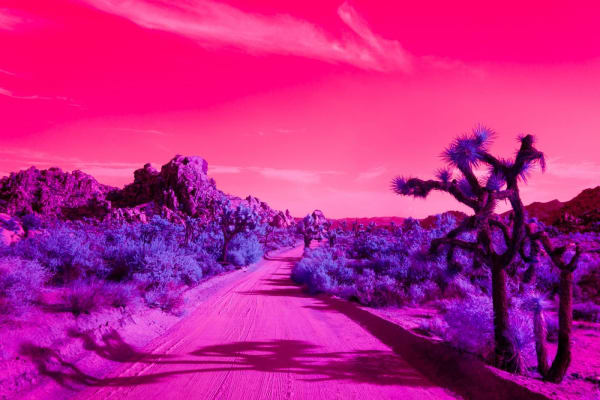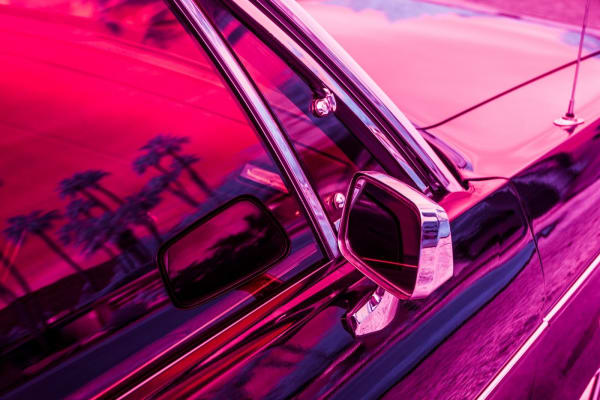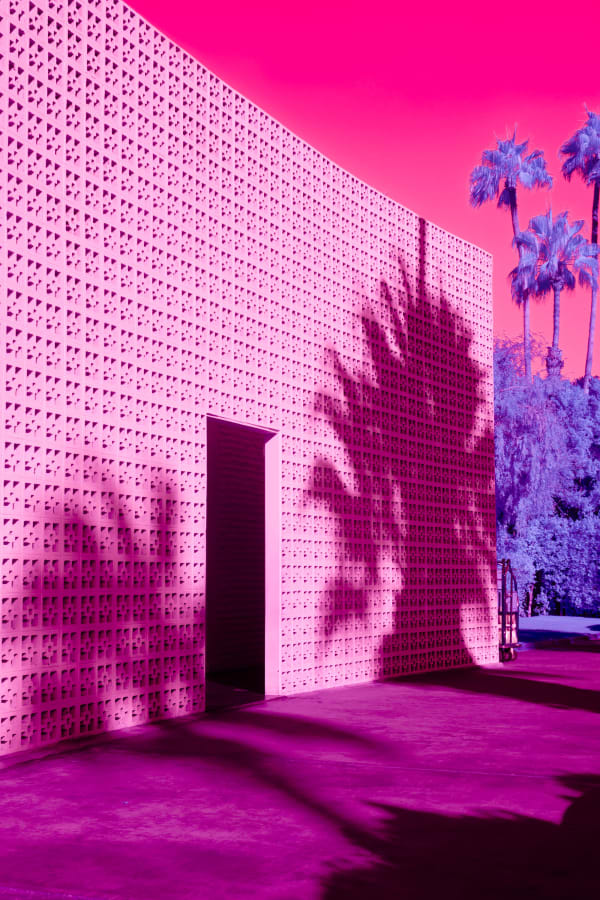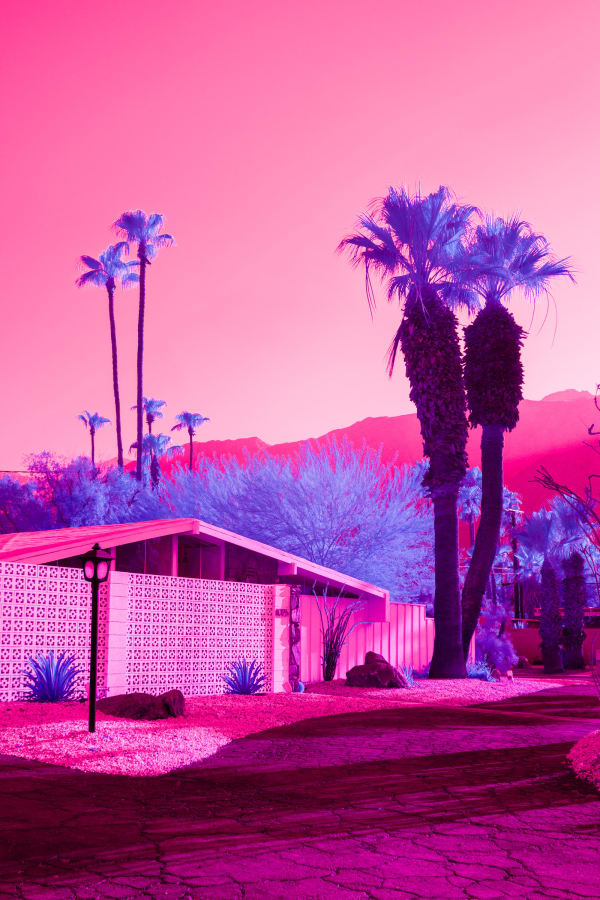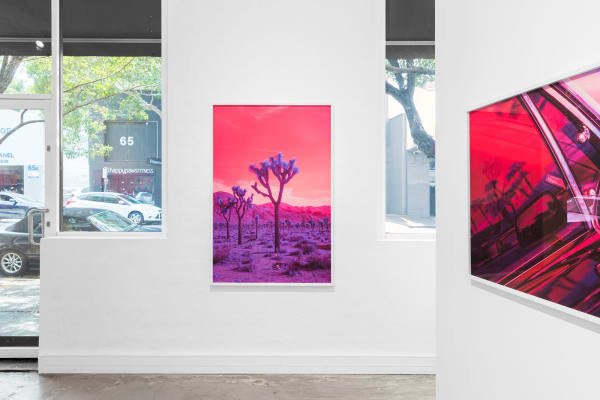Kate Ballis: Hyperphantasia
-
 Kate BallisSands, 2017archival inkjet print on cotton rag paper150 x 100 cm, 153 x 103 cm (framed)Edition of 8
Kate BallisSands, 2017archival inkjet print on cotton rag paper150 x 100 cm, 153 x 103 cm (framed)Edition of 8 -
 Kate BallisIsla Del Pescado, 2017archival inkjet print on cotton rag paper100 x 150 cm, 103 x 153 cm (framed)Edition of 8
Kate BallisIsla Del Pescado, 2017archival inkjet print on cotton rag paper100 x 150 cm, 103 x 153 cm (framed)Edition of 8 -
 Kate BallisHyperphantasia, 2018archival inkjet print on cotton rag paper100 x 150 cm, 103 x 153 cm (framed)Edition of 8
Kate BallisHyperphantasia, 2018archival inkjet print on cotton rag paper100 x 150 cm, 103 x 153 cm (framed)Edition of 8 -
 Kate BallisFortune, 2018archival inkjet print on cotton rag paper150 x 100 cm, 153 x 103 cm (framed)Edition of 8
Kate BallisFortune, 2018archival inkjet print on cotton rag paper150 x 100 cm, 153 x 103 cm (framed)Edition of 8 -
 Kate BallisDodge, 2017archival inkjet print on cotton rag paper100 x 150 cm, 103 x 153 cm (framed)Edition of 8
Kate BallisDodge, 2017archival inkjet print on cotton rag paper100 x 150 cm, 103 x 153 cm (framed)Edition of 8 -
 Kate BallisThe Parker, 2018archival inkjet print on cotton rag paper150 x 100 cm, 153 x 103 cm (framed)Edition of 8
Kate BallisThe Parker, 2018archival inkjet print on cotton rag paper150 x 100 cm, 153 x 103 cm (framed)Edition of 8 -
 Kate BallisPalm Baum, 2018archival inkjet print on cotton rag paper100 x 150 cm, 103 x 153 cm (framed)Edition of 8
Kate BallisPalm Baum, 2018archival inkjet print on cotton rag paper100 x 150 cm, 103 x 153 cm (framed)Edition of 8 -
 Kate BallisGoddess, 2018archival inkjet print on cotton rag paper100 x 150 cm, 103 x 153 cm (framed)Edition of 8
Kate BallisGoddess, 2018archival inkjet print on cotton rag paper100 x 150 cm, 103 x 153 cm (framed)Edition of 8 -
 Kate BallisDreamscape, 2018archival inkjet print on cotton rag paper150 x 100 cm, 153 x 103 cm (framed)Edition of 8
Kate BallisDreamscape, 2018archival inkjet print on cotton rag paper150 x 100 cm, 153 x 103 cm (framed)Edition of 8 -
 Kate Ballis1025 E Apache, 2018archival inkjet print on cotton rag paper150 x 100 cm, 153 x 103 cm (framed)Edition of 8
Kate Ballis1025 E Apache, 2018archival inkjet print on cotton rag paper150 x 100 cm, 153 x 103 cm (framed)Edition of 8 -
 Kate BallisSanctuary, 2017archival inkjet print on cotton rag paper100 x 150 cm, 103 x 153 cm (framed)Edition of 8
Kate BallisSanctuary, 2017archival inkjet print on cotton rag paper100 x 150 cm, 103 x 153 cm (framed)Edition of 8
Kate Ballis employs photography as a conduit into the unseen. Straddling the empirical and the magical, her photographs capture invisible energy, mystifying the mundane and rendering the familiar foreign. ‘I am fascinated with unseen energy’, reflects the Melbourne artist, who works with a specially converted full-spectrum mirrorless camera and infrared filters to exposes a world that exists just beyond human perception. Infrared light is emitted by plants via the photosynthesis process, which has made deserts such as Palm Springs, Joshua Tree National Park, Arizona, the Atacama Desert and the Uyuni Salt flats fascinating subjects for Ballis. In this light, shrubs and cacti that usually appear barren spring to life, while ostensibly desolate landscapes become lush, vibrant oases.
Palm Springs has long been an artistic muse and second home for Ballis, yet after some time its Mars-like deserts, Modernist architecture, mid-century pools and luxury vintage cars became all too familiar, too ordinary, and her eyes ‘switched off.’ In response, the artist enlisted magical realism to re-enchant the city and its surrounding landscapes. Converting a digital camera to infrared, exponentially extending the edge of the visible spectrum, her viewfinder transformed the way she perceived Palm Springs. Just as a painter carefully selects their pigments, Ballis experiments with various filters – which allow infrared plus one or two other colours through to the camera sensor – to ‘colour block’ each landscape. Iconic locations including the Ace Hotel & Swim Club, the Palm Springs Tennis Club and the Parker Hotel, are reimagined as elusive dreamscapes inhabiting a kind of surreal-hyperreal. The blue-pink palette summons the hues of 1980s Americana with compelling cinematic saturation. It is as though we are viewing these everyday vignettes through actual rose-coloured glasses. ‘I aim to candy-coat California,’ reflects the artist, who is partly inspired by the lives and wardrobes of her Barbie dolls in the ‘80s. There is indeed a sickly-sweet allure at play, a theme park pseudo-reality that conjures the awe and wonder of a child.
Though Ballis’ photographs glow with an infantile euphoria, there is also something unsettling at play. Steeped in the pigments of confectionary, her landscapes can be read as symbolic harbingers of a nature-less world where the shades of the organic usurped by the synthetic. Green is no longer the hue of health, earthy browns do not exist, the blue sky has been swallowed by a haze of magenta and water has turned blood red. Motionless mise-en-scènes within nostalgic mid-century vistas resemble out-of-hours film sets, evoking notions of desertion or abrupt abandonment. And yet there are hints of habitation; floating pool toys still inflated, deck chairs poised in the sun, freshly manicured gardens and half-covered automobiles conjuring a sense of dormancy, as if we have arrived at a rare moment of stillness before or after the frame fills with action. In these liminal realms one cannot help but feel displaced, navigating an alien landscape that has the forms of the familiar but the feelings of the strange.
Ballis recalibrates everyday textures and tones with tactile precision. Boulders resemble cells under a microscope, their doughy forms seemingly soft and rubbery, while undulating hills backdropping planetary topographies mimic the surface of the moon. Drenched in the flattering hue of lilac, houses and apartment blocks look as though they have been plucked from a dollhouse or diorama, their facades flat and flawless. Grass has the softness of shagpiles, and pools shimmer with the crystalline clarity of melted glass. The familiar blue tones of atmospheric perspective are supplanted by a deep fuchsia, pulling the background forward and destabilising our perception of distance. In this way, colour is used to both reveal and conceal. All is a fiction of light.
Each photograph becomes, in the artist’s own words, ‘like a memory you can’t quite pinpoint’. Her lucid images prompt us to question conventional associations of colour as we see the world – quite literally – in a new light.
